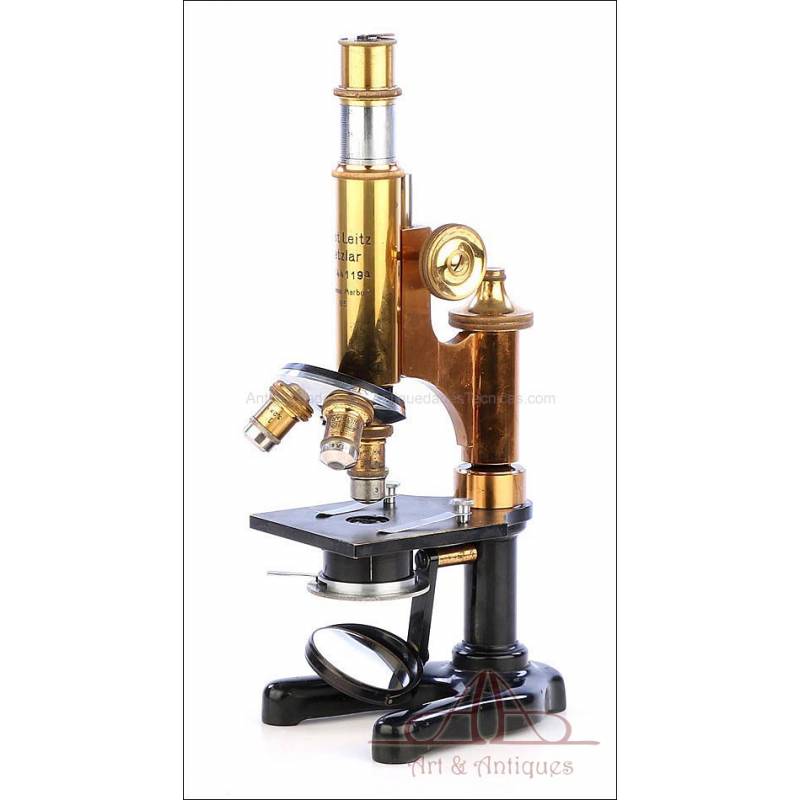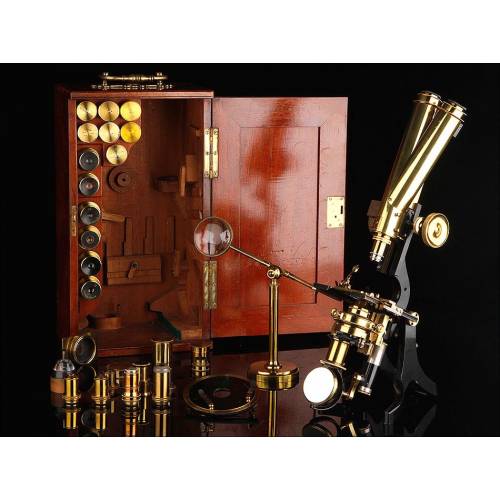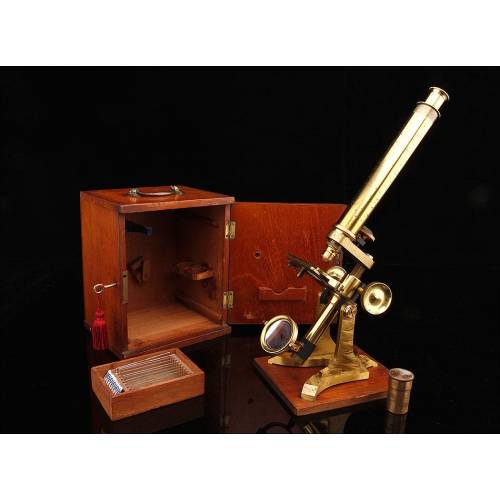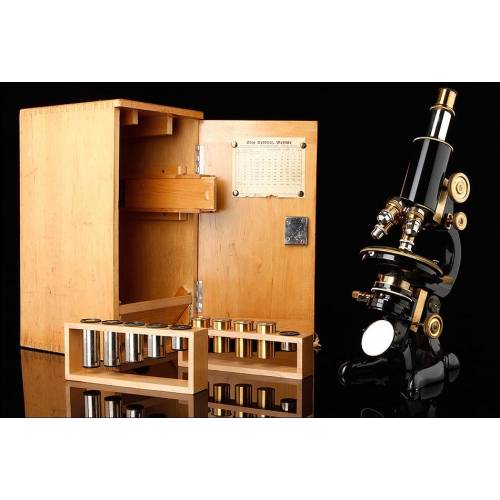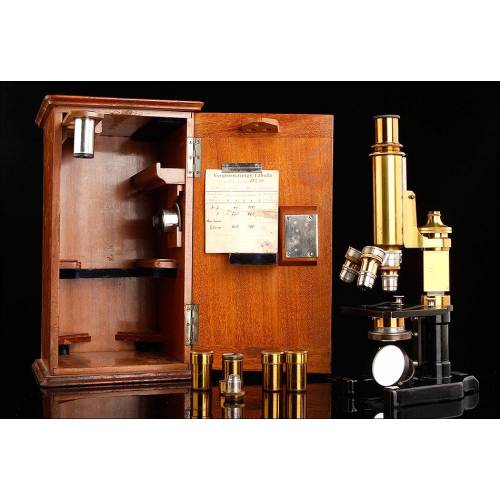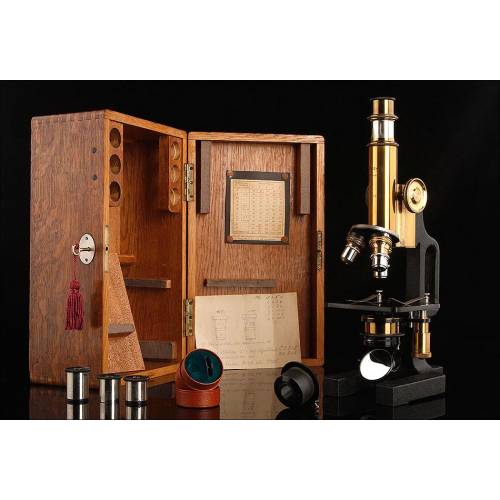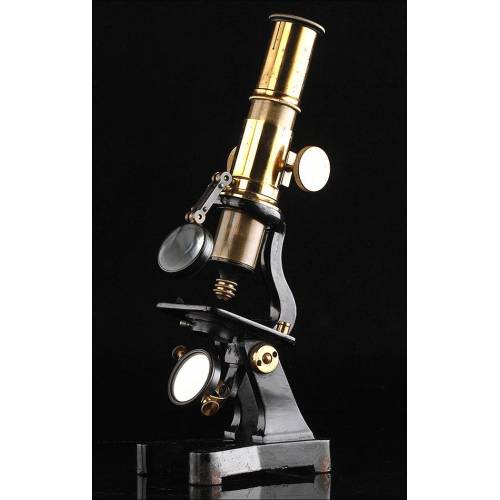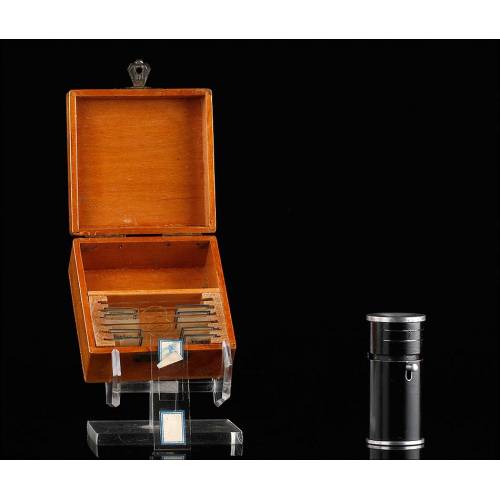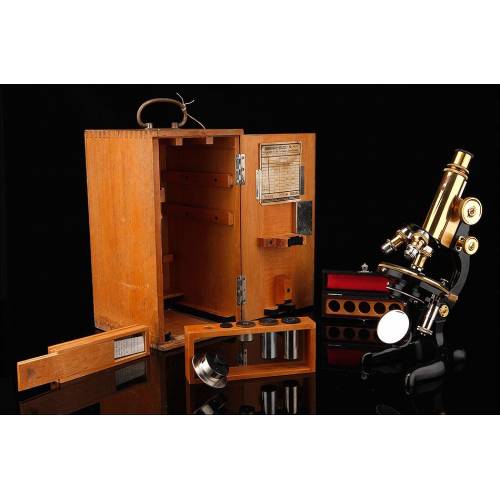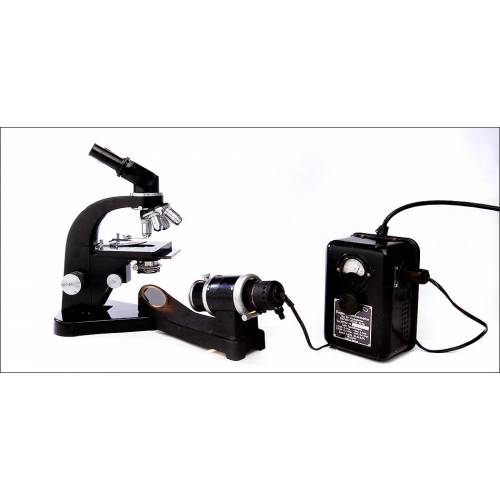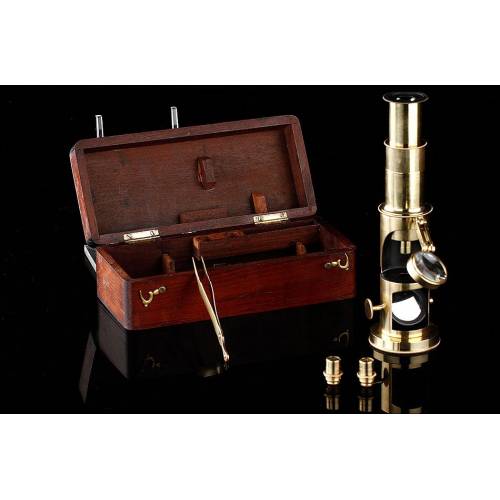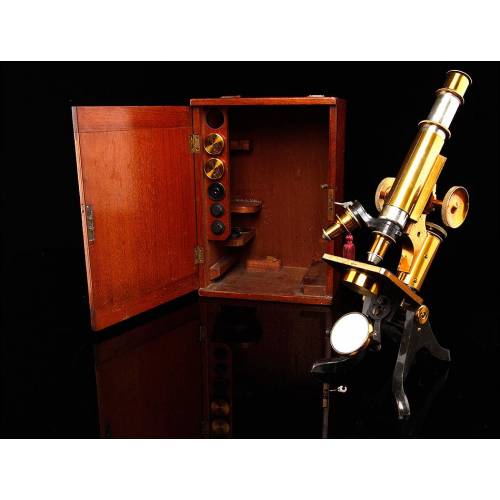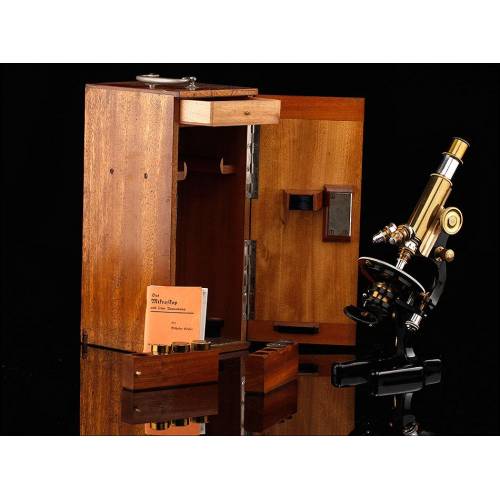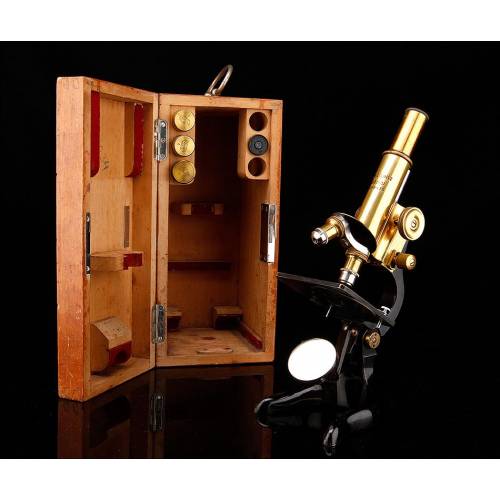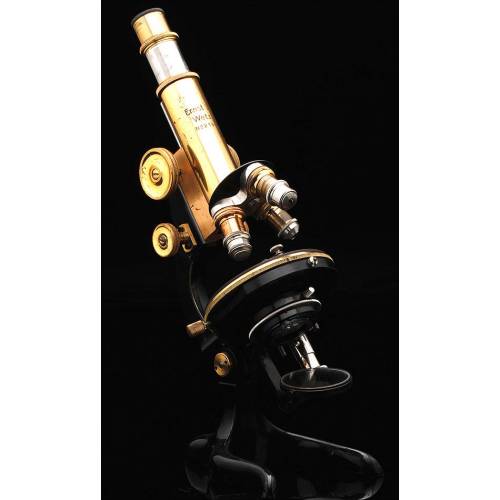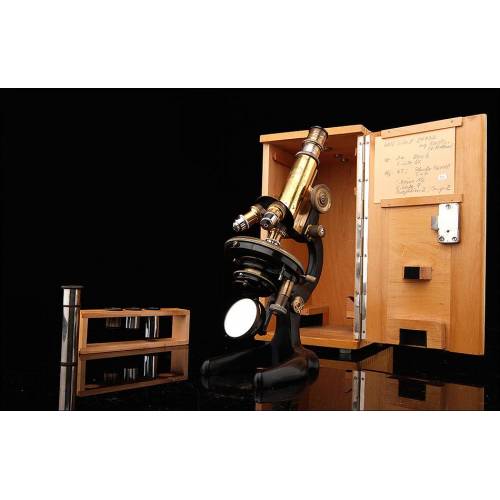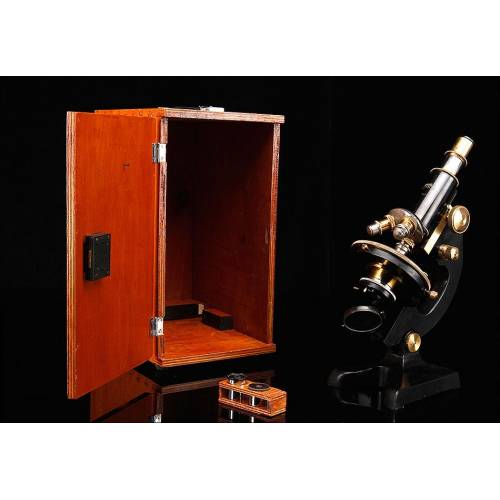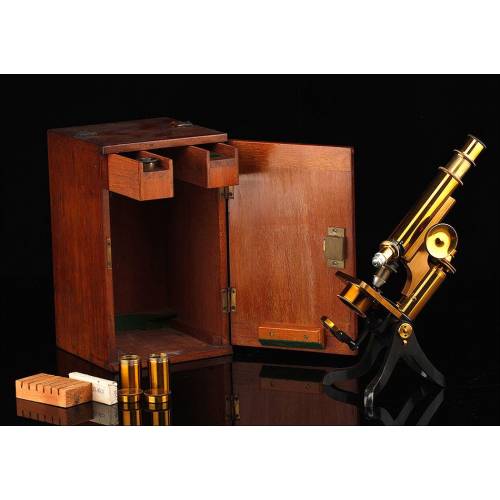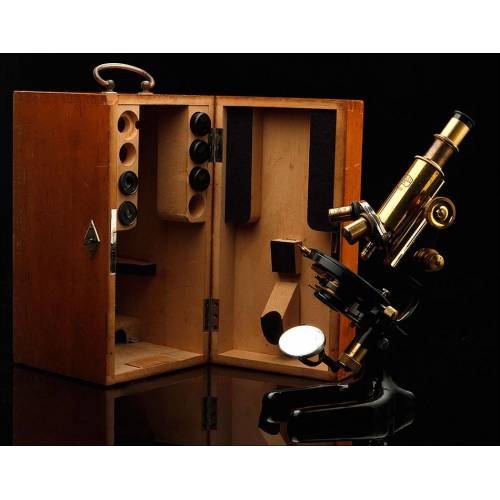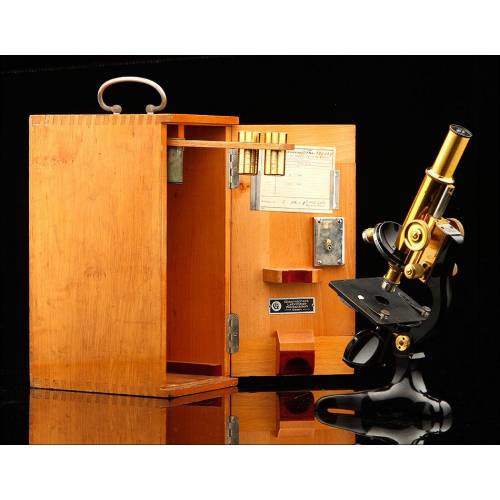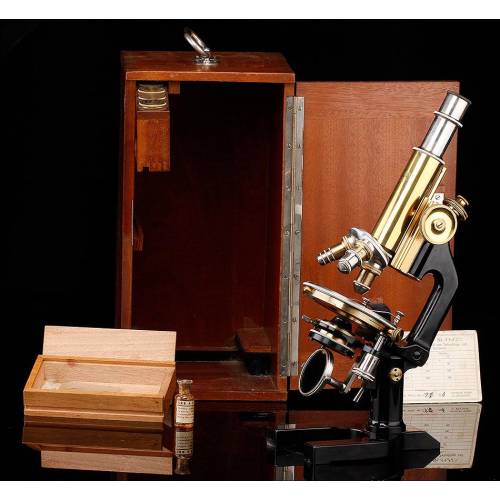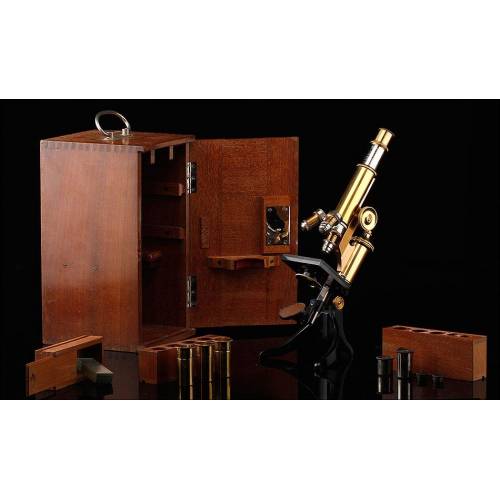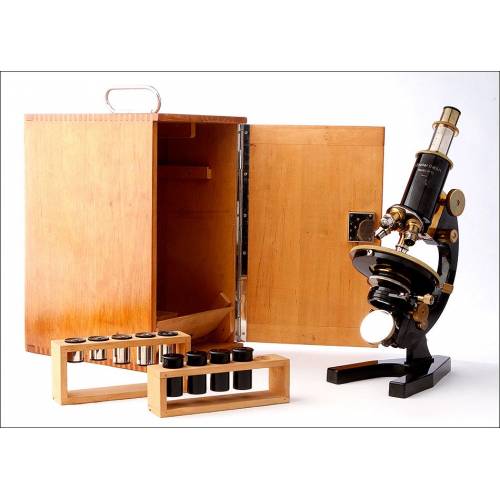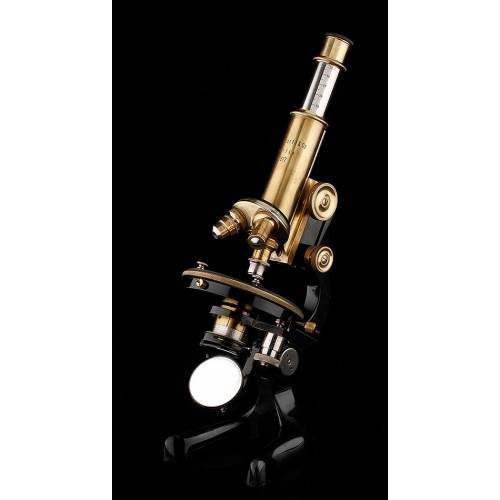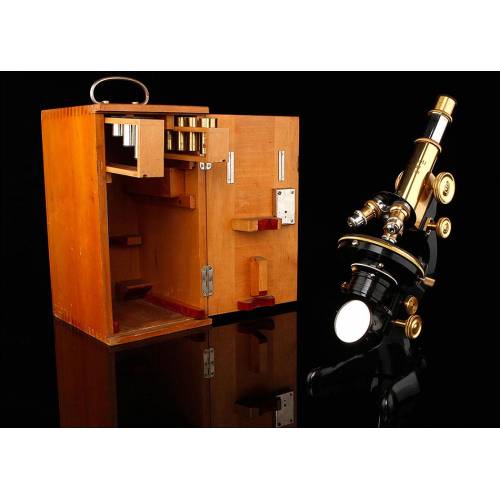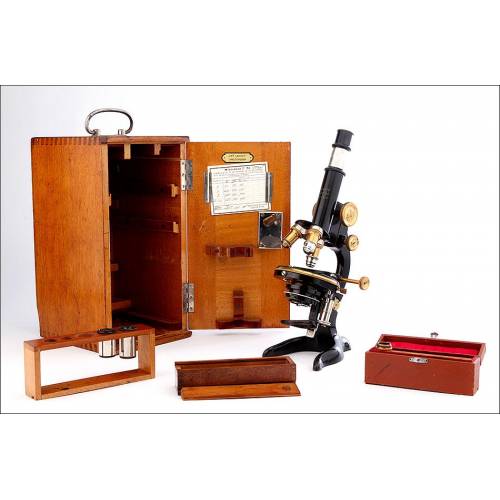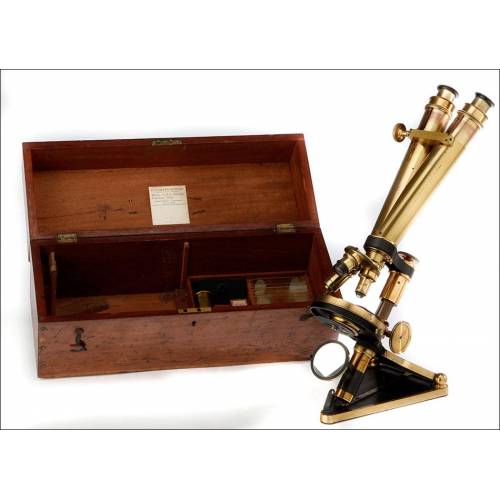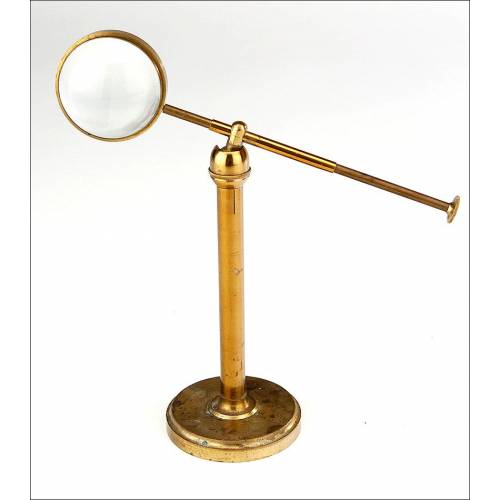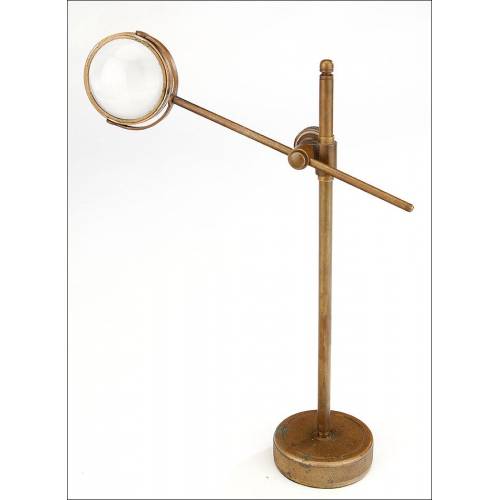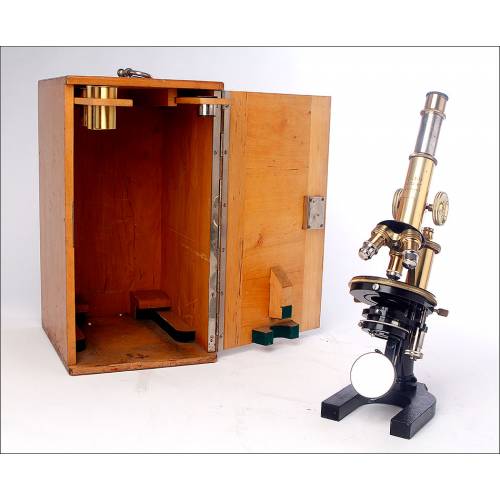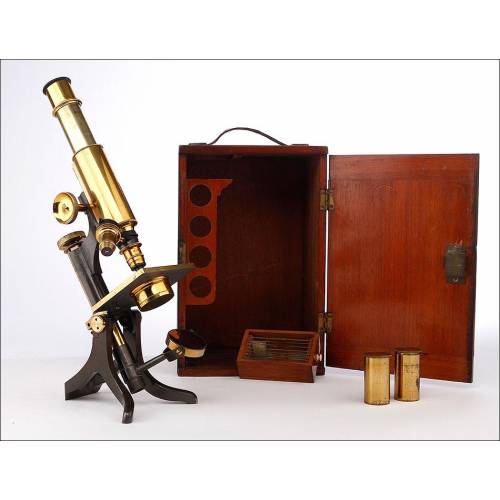D-823
Ernst Leitz Wetzlar Microscope. Anatomy of Marburg. Germany, 1911
Stilysh antique Leitz Wetzlar microscope once used for university work. In fine condition and good working order.
Sold!
Antique Ernst Leitz Wetzlar microscope in amazing condition, made in Germany in 1911 and entirely original. At the turret we can see the engraved manufacturers name and serial number: Ernst Leitz Wetzlar N1 244299ª. Under this inscription there is another inscription Reading Anatomie Marburg 95, which indicates that the microscope was part of the equipment of the Department of Anatomy of the University of Marburg. This detail provides it with a very special personality and charm, which match its gorgeous design. The horseshoe foot preserves the original black-lacquered finish in great condition. At the top we can see the microscopes body, made up of different brass component parts and pieces protected by the original transparent lacquer. This finish provides the metal with a great-looking patina. The rack-and-pinion system which makes it possible to move the turret up and down is functional and moves softly. The microscope mounts a three-lens revolving nosepiece; one of them bears the Leitz logo, and other is signed by H. Seibert. As attractive as authentic, this striking Leitz Wetlzar microscope from the University of Marburg will truly shine in the most ambitious collection. Dimensions: Width: 4.13 in / 10.5 cm. Height: 5.31 / 33 cm. Depth: 13 in / 33 cm.Ernst Leitz Wetzlar - History The beginnings of the famous optic material manufacturing company named Ernst Leitz Wetzlar can be found in the first half of the 19th century, when the mechanic and selft-taught mathematician Carl Kellner founded the Carl Kellner Optisches Institut in Wetlzar, Germany. After his early death his widow maintained the business, and in 1864 the mechanical engineer Ernst Leitz entered the company. Just five years later, Leitz took control of the firm and changed its name for Ernst Leitz Wetzlar. Leitz led the company to success after introducing improvements such as serial production, raising sales volume rapidly after 1871. Leitz microscopes included technical improvements that increased their quality; by the late 19th century the company already had a worldwide reputation. Ernst Leitz died in 1920 and the leadership of the firm passed to his son. As well as for their microscopes and optic material, Leitz became hugely famous for their famous Leica cameras (abbreviation of Leitz Camera).

